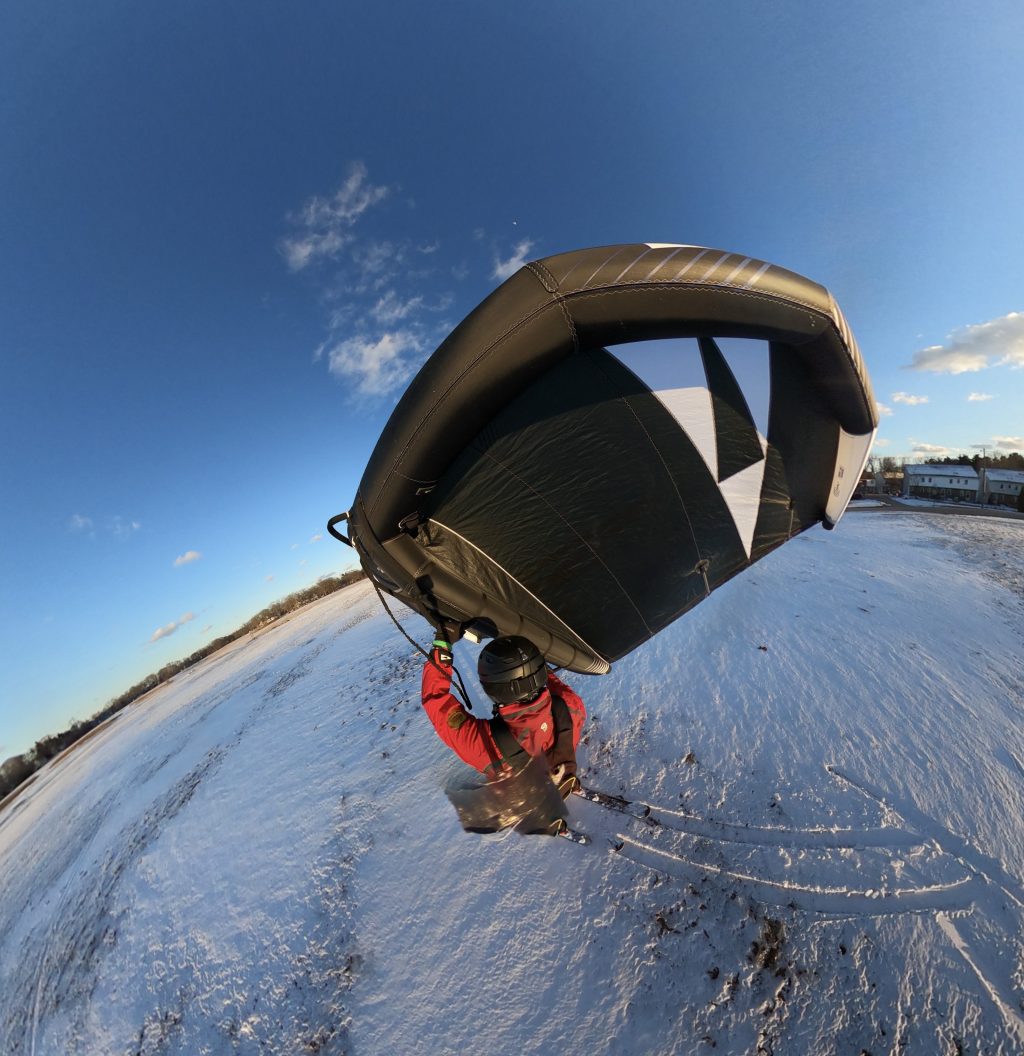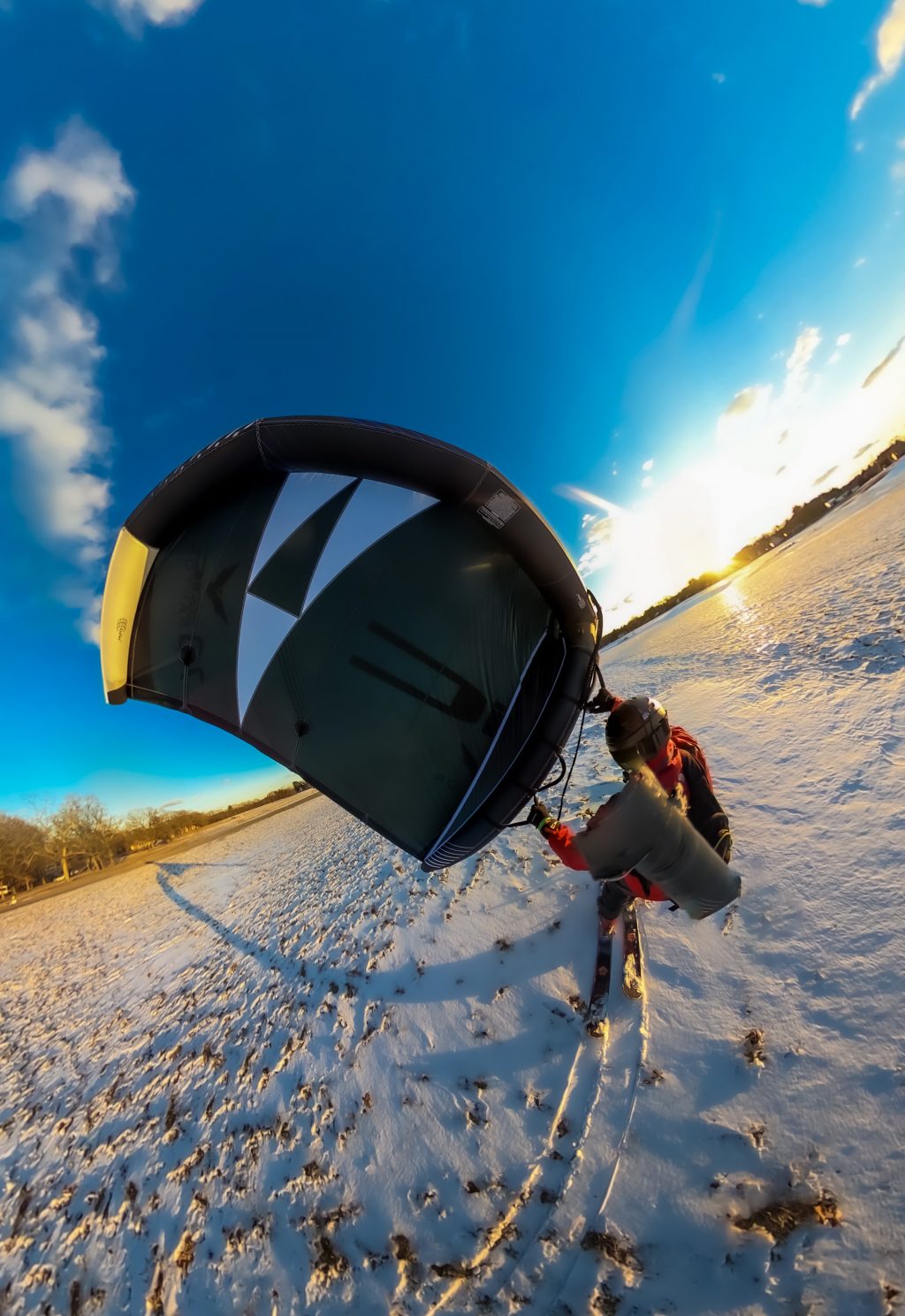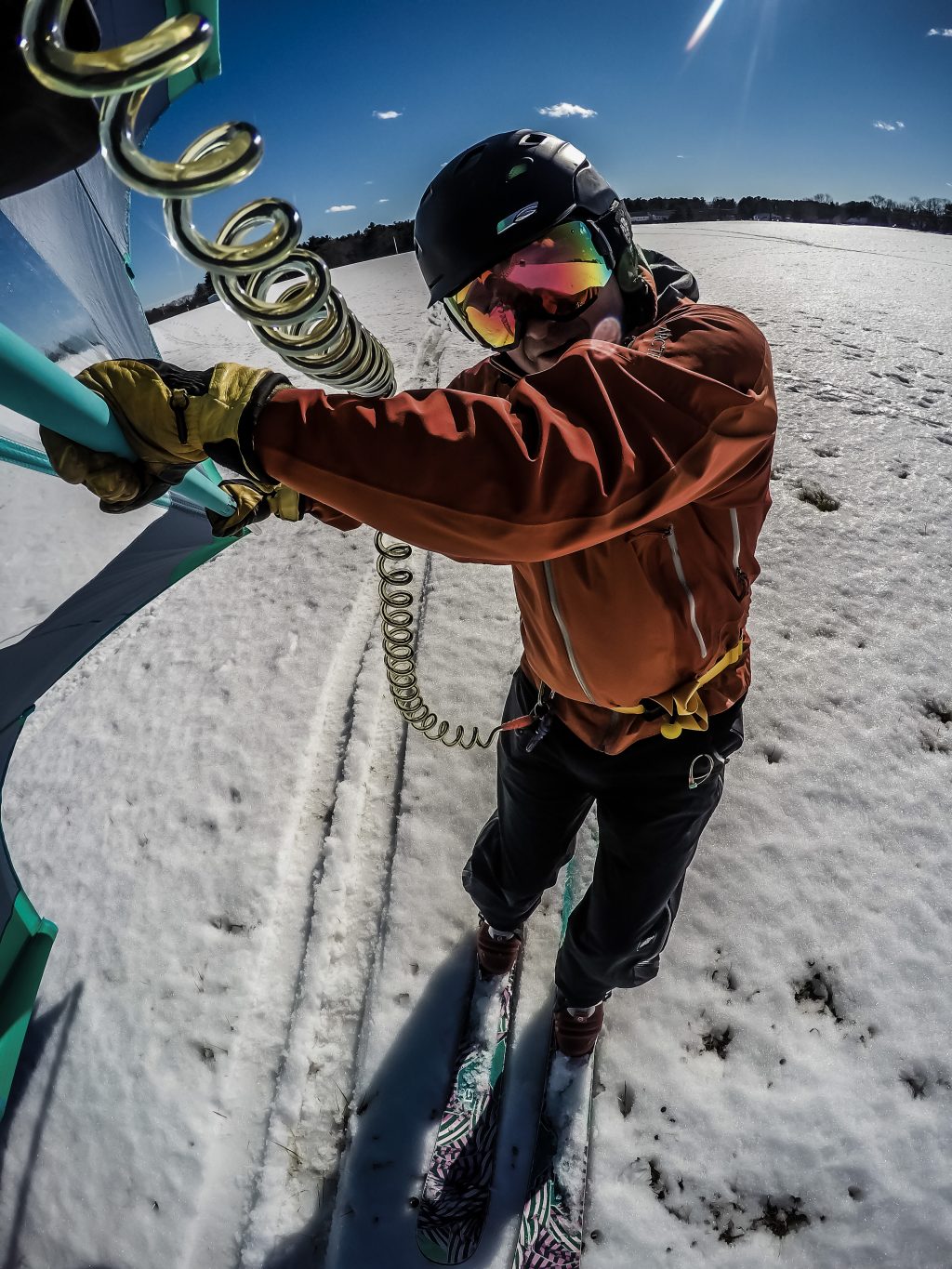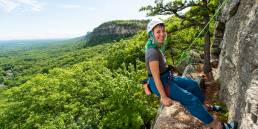There’s a lot to like about skiing at the resort, but there are some downsides, like long lines, crowded slopes, and expensive ticket prices. Backcountry skiing has long provided an alternative, however, a recent surge in popularity has made the backcountry an increasingly busy place to ski. Luckily, there’s an alternative: wing skiing.

What is Wing Skiing?
In recent years, surfers have done a lot to popularize wings. On Cape Cod, it’s fairly common to see people ripping it up on foil boards with wings—a lightweight, inflatable cross between a sail and a kite that captures the wind’s energy to propel surfers on the ocean. While wings are a superb way to have fun on the water, they’re just as great on frozen surfaces, like snowy fields and frozen lakes.
As its name implies, wing skiing uses a foil wing on snow with skis (or a snowboard). What makes wing skiing a fantastic winter activity is that it doesn’t require a great deal of space or very much snow and is pretty easy to learn. And once you have the gear, it’s free.

Five Wing Skiing Tips
1. Safety
One of the keys to a successful day in any outdoor adventure is staying safe. For wing skiing, this means dressing appropriately for winter conditions. It also means having the proper safety equipment, which includes:
If you’re going to venture out on a frozen lake, remember to check that the ice is solid and familiarize yourself with ice safety. If wing skiing in a field, make sure to assess any potential hazards, like trees, rocks, or fence lines.
2. Equipment
I’ve found that alpine/downhill skis are the easiest way to learn to wing ski. Skis best handle the variable conditions encountered in both an average New England winter and a day wing skiing—where you can be gliding on packed snow one moment and blasting through a deep drift the next.
That said, I’m a fan of using telemark skis—they tend to be a bit more forgiving than their alpine counterparts and are easy to skate with. Snowboards also work; they’re hard to beat when the snow starts stacking up.
3. Wing
Wings come in a wide range of styles and sizes. Most people will be well served by a wing in the five- to seven-meter range; they provide enough power, they’re stable when the wind is strong, and they’re relatively manageable to control.
4. Conditions
One of the best parts about wing skiing is that it doesn’t require very much snow. Like other skiers, I dream about deep powder at my favorite backcountry stash, but I’ve found I can have a lot of fun with my wing when the “tide” is low in the backcountry. About three-quarters of an inch of snow is all you really need.
Although wing skiing doesn’t require a lot of snow, you do need wind. Typically a five- to seven-meter wing will need at least 10 knots of wind to be effective. You’ll also want to ensure it’s blowing in the proper direction at your location. For example, you don’t want the wind pulling you toward a hazard, like a busy road or stone wall.
5. Location
As mentioned above, wing skiing doesn’t require a lot of space. Of course, the more room you have and fewer obstacles (like rocks and trees), the better. Athletic fields and golf courses are great options for both new and experienced wing skiers alike.

Learning to Wing Ski
Wing skiing is fairly intuitive—especially if you can already ski or snowboard—and most pick it up quickly. There are a bunch of great tutorials on YouTube and you can learn the basics in the time you spent waiting in the lift line last Saturday. Before you know it, you can pocket the $100+ you would have spent on a lift ticket, save yourself a few hours driving to a ski area, and find an awesome adventure at your local soccer field.
Luke Foley
Luke Foley is passionate about discovering and sharing hidden local treasures and has long been a New England adventure enthusiast. After all, there are only a few places where you can skin for fresh tracks in the morning and have a sunset surf session on the same day.
Related Posts
April 24, 2024
What to Bring When Road Tripping with Your Dog
Prepare for the ultimate road trip with…




